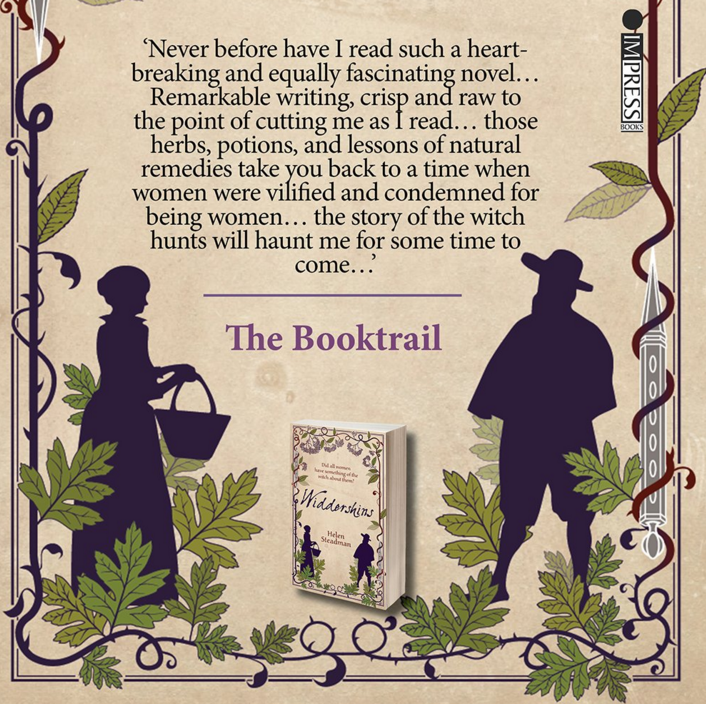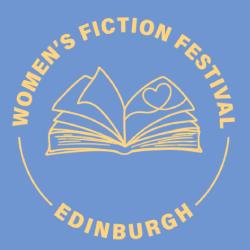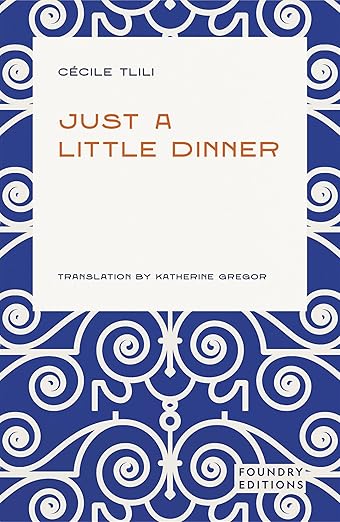#BookTrailLiteraryLocations – Newcastle – Helen Steadman
Welcome to Newcastle and the story of the Witch trials..
There is a church tucked away in the centre of Newcastle, surrounded by shops, offices, China Town and even overshadowed somewhat by the local football stadium….but there is something very special and unique about this church…

St Andrew’s Church (c) The BookTrail
Booktrail Widdershins here
Where are you from and why did this story appeal to you?
Apart from spending my twenties in London, I’ve spent my life in the north east of England, pretty much equidistant from Newcastle and Durham. In terms of this story appealing to me, it arrived as part of a gradual process. In 2011, I decided to take an MA in Creative Writing, which gave me plenty of time to decide what to write about before the MA began in October 2013. I knew I wanted to write a historical novel, but had no clue what about. I was walking in the woods one day and Florence Welch’s song ‘Rabbit Heart (Raise it up)’ started going through my head. This made me think of sacrifice, ritual and magical goings on, which led me to witches. Although I knew in a flash that I wanted to write about witches, I didn’t have any firm ideas at that point. In truth, my initial thoughts veered towards something rather more magical and supernatural than what I ended up with.

helen steadman
How did you research it?
The first part of the research was an enormous amount of reading, so I read lots of books about witches, witchcraft, witchfinders, demonology, paranormal issues, herbal remedies, spells and magic, and I researched midwifery, north-east history and the seventeenth century generally, as well as looking at clothing and recipes. I bought old maps and filled my office walls with them, I looked at archive records, and I spoke to local historians. In terms of practical research, I joined a paranormal group and went out ghost-hunting (sadly, I never saw a ghost). I also took tree medicine lessons, grew lots of herbs in the garden, and made lots of remedies from my own herbs and also from wild plants (which weren’t always welcomed by my friends and family).
During the initial reading part of the research, I found my story, courtesy of a disgruntled Northumbrian coal trader, Ralph Gardiner.
Thanks to his grievances, I discovered that the Puritan-ran council in Newcastle (in perhaps the earliest example of local authority performance-related pay) offered a witchfinder twenty shillings per witch caught. Until this point, I hadn’t known about the Newcastle witch trials, but I knew straight away that this would be my story.

The Graveyard at St Andrew’s (c) The BookTrail
On location..
I spent huge amounts of time ‘on location’ as it can be a great way to drawn inspiration. Mainly, I spent time walking through the woods and along the river where the book is set, writing the book in my head. Each night, I would scribble down whatever I remembered from the day’s walk. I regularly walked the river where Jane lives, and I also regularly walked the part of the River Derwent where it flows into the River Tyne. But I have to confess that while I walked both ends on most days over a period of months and years, I never walked the full stretch of the river. And, although I feel like I know every leaf and twig in the countryside surrounding Jane’s home, visitors will find no trace of Jane’s house, the church or the graveyard as they are my own creation.
However, it is possible to visit Durham’s House of Correction at Elvet in Durham. And visitors will have a more entertaining time of it than Jane Chandler as it is now a nightclub (Jimmy Allens). Likewise, in Newcastle, it’s possible to visit the Town Moor, to walk the city walls and gates (at least those parts that are still standing), as well as to visit St Andrew’s churchyard, where the victims are buried.

St Andrew’s Church (c) The BookTrail
St Andrews
I’ve been there several times, and I pass it on a regular basis. But the last time I went into the graveyard was on the day that I submitted the novel for my MA (15 March 2016 – a day that is etched in my memory for some reason). I felt quite light-headed after the padded envelope was handed over, and I’m sure it was a sunny day in Newcastle, but by the time I reached St Andrew’s, it was misty and damp – I remember nearly setting my neck as it was so slippery underfoot, so if you go there, please be careful. It was a very sobering feeling really. I felt it was important to bring this story more into the public eye, and give a voice to the victims, but of course, nothing can change the past. Those people still died terrible deaths for nothing more than perhaps looking at someone the wrong way earlier that morning. So ultimately, I was left with quite a hollow feeling, and I’ve not been in there since.
The hidden corners of Witchery Newcastle..
The so-called witches were said to have been executed on the Town Moor in Newcastle. As the name suggests, this is a fairly large expanse of open land. Executions generally took place at Gallowgate, near to the gaol in Newgate Street. The executions may have been staged on the Town Moor due to the number of people being killed (and perhaps also to accommodate large crowds). Although I don’t mention it in the book, it seems that nine moss troopers (brigands operating along the border of Scotland and England) were also executed, which would have added to the huge (if terrible) spectacle. The bodies of the alleged witches were laid to rest in St Andrew’s churchyard – again near to Newgate Street and Gallowgate. During some recent works at the church, it seems that some of the bones (teeth, a piece of skull and a rib bone) resurfaced and they were subsequently reburied in a different part of the graveyard. There was some local news coverage suggesting that a worker who had touched the skull broke out in sores and scabs…

The dark trees and church (c) The BookTrail
Difficult times…
Some parts of the book were difficult to write, and even to think about, because there are some dark and difficult subjects in there. Originally, the book was much grimmer – a lot more medieval, if you like – but I decided to add some lightness to it here and there both for the sake of anyone reading and for myself. It’s quite difficult to create characters and then put them through such harrowing experiences, because they do start to feel like real people in your head. And although my characters are fictional, I was always conscious that real people were treated in this way. What made it sadder, of course, was that this wasn’t a one-off incident. While it was one of the biggest executions for witchcraft on one day, thousands of people (mainly women, but also some children and men) were tortured and executed around the world – and it’s not something that’s relegated to the dim and distant past, unfortunately.
 Did you discover other things too awful or that you did not have space for in the book?
Did you discover other things too awful or that you did not have space for in the book?
I read endless amounts about torture and sadism, which took quite a toll on me over time. I did initially have some poor woman being gibbetted, but it was so grim, I took it out. There’s a thin line between accurate historical portrayal and gratuitous gruesomeness… What most shocked me though, were the accounts by two witch hunters operating in the south of England, Matthew Hopkins (the Witchfinder General) and John Stearne. It was quite sickening to read their own accounts of their work and to see how they justified it to themselves. It’s worrying to see how easily people can hoodwink themselves into believing almost anything about other people if it serves their purpose.
It frightened me how easily John was led astray…this story is relevant in today’s world is it not?
I suppose it comes back to the idea again of people being willing to believe almost anything bad of others if it suits their purpose. And this, of course, has disastrous results. When he was younger, John really makes an effort to try to be more balanced in his views, and there’s hope for him. But over time, circumstances overwhelm him, and instead of breaking out of this terrible cycle he’s found himself in, he goes on to perpetuate it. There are many points throughout the book when he could have made different decisions, but ultimately, his fragile self-esteem and thirst for revenge overcome any last vestige of humanity remaining from his childhood.
BookTrail Boarding Pass: Widdershins
Twitter: @hsteadman1650 Web: helensteadman.com




